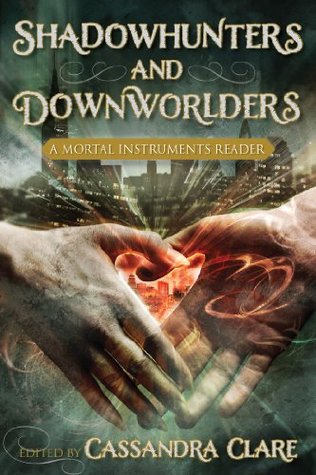More on this book
Kindle Notes & Highlights
Read between
January 13 - January 13, 2021
Art is a kind of magic. Creativity is mysterious, even to artists, who might be able to name their inspiration but can’t always explain how their influences and experiences came together to create this new thing—this painting, this story, this song.
Art is magic, and art is powerful. Art saves lives—I really believe that. It gives us courage and compassion we might not have on our own.
But Jace Wayland Morgenstern Herondale Lightwood—who, thanks to his angel blood, is one of the most powerful of all Shadowhunters, and who has more names for seraph blades than can be found in your average baby-naming book—has one weapon that trumps them all. Humor.
See, Jace never learned how to flirt properly, because he was raised by a murderous sociopath.
If you’re a child of the ’80s like me, reared on a steady diet of Jonestown horror stories and trashy novels about brainwashed teens, you would immediately recognize the situation for what it was: Your best friend has joined a cult. If you’re not a child of the ’80s but not completely oblivious, you’d still clue in pretty quick: definitely a cult.
Exhibit A: Like Duckie, Simon tries to make the girl he loves jealous.
Exhibit B: Simon is the grass on this side—the known quantity.
Exhibit C: Jace bleeds and battles demons and still has enough energy to make a smartass comment afterward, while Simon just bleeds.
Exhibit D: Simon has been in love with Clary for years.
Exhibit E: The proof is always in the pudding, or in this case the kiss.
Exhibit F: Jace embodies the bad boy, and Clary is immediately attracted to him because of it.
Until then, like crop circles, UFOs, the Bermuda Triangle, and ESP, the Duckie effect is an unexplained phenomenon. Only one thing is certain: Even if he’s an adorable Jewish vampire, the best friend never gets the girl.
HOLLY: When we sat down to talk about this essay, it happened to be in a room where Cassandra Clare was hard at work on her next book. We thought we would just have the conversation in front of her and see if she wanted to pitch in. KELLY: It seemed appropriate, since this is often the way that the three of us work: Everyone doing their own writing, and stopping when necessary to discuss a plot point or read what someone else is working on and make suggestions.
Immortality is stasis, but stasis doesn’t always seem like a bad thing, especially if the alternative is losing some essential part of one’s identity.
When Raphael (vampire) says that to Simon (now a vampire too), Simon thinks: “It sounded good, but did anyone really want to be sixteen forever? It would have been one thing to be frozen forever at twenty-five, but sixteen? To always be this gangly, to never really grow into himself, his face or his body? Not to mention that, looking like this, he’d never be able to go into a bar and order a drink. Ever. For eternity.”
HOLLY: Can he even drink? Like, booze? Caaaaaaassie! CASSIE: It’s never come up before. He says at one point in the books that he could drink a little bit of coffee. Eating would make him sick. KELLY: So no booze. No barbecue, Chicken McNuggets, or cotton candy. It’s a bit like keeping kosher only much, much worse. And of course, yes, blood isn’t kosher.
KELLY: I always wanted to ask Cassie if Magnus was inspired, at all, by Diana Wynne Jones’ wizards Howl and Chrestomanci. Cassie? CASSIE: By Howl, yes. Not so much by Chrestomanci. I always loved that scene in Howl’s Moving Castle where Howl dyes his hair blue. I wanted to write wizards that weren’t old and gray like Dumbledore. Everybody pictures wise, ancient, beardy wizards. I wanted to write a wizard who was young, a New York raver, a party boy.
KELLY: And traditionally, vampires are good at getting more than blood from their prey. They can hypnotize their victims into signing over their estates, etc. HOLLY: Like a sweetheart scam, but with blood.
KELLY: We haven’t talked about the Seelie Queen yet. Cassie, when you wrote the Seelie Queen, what sources were you drawing on? Which Faerie Queens were inspirations? CASSIE [points to Holly Black]: Hers. HOLLY: Ha! The thing I find interesting about faeries in general is that they were never human and that they are essentially other. The shorthand for that in Celtic folk-tales is “they laugh at funerals and cry at weddings,” but it alludes to the whole separate moral system faeries operate under. And in the Mortal Instruments, the Seelie Queen is not just untouched by her immortality but
...more
KELLY: If the devil was an agent, everybody would want to sign up with him.
Thus ended our conversation, as we all sat silent in contemplation of exactly which investments would be our best bet for long-term financial security if Holly was wrong and we all became vampires.


